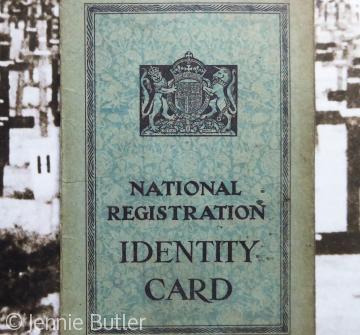1939 National Register for Dummer

The National Register of 1939[1] shows the occupations of Dummer residents (population 360 ) to consist largely of those associated with the land (landowner, farmer, smallholder, labourer, gardener, market gardener, forestry worker, gamekeeper, shepherd, cowman, poultryman, carter, sawyer and tractor driver), in trades related to an agricultural economy (carpenter, wheelwright, blacksmith, haulage contractor, brick layer) and in services supporting the community (grocer, shopkeeper, roundsman, newsagent, plumber/pipe layer, inn keeper, bus proprietor, petrol station owner and road labourer). Four men worked at an aeronautical instrument maker, one each as a telephone linesman engineer, a paper mill hand and a watchman at a motor works.
Professional and government officers included the rector, an undersecretary of state for agriculture, elementary school teacher, sub-postmistress, government officer (health) and a police constable.
Women were largely recorded as unpaid domestic workers in their own homes with the exceptions of a foster mother, a café assistant, a tailoress in a clothing factory, a school cleaner and a small number who were employed as domestic servants.
Domestic service was limited to six properties: Dummer Grange where there was a butler/chauffeur, gardener, two domestic servants and a children’s nurse; Dummer House with a groom, chauffeur/gardener, cook, parlourmaid and housemaid; Clump House with a cook and housemaid; the Rectory, Dummer Down farm and Dummer Grange farm each with one domestic servant.
The golf course established in 1928 gave rise to the new occupations of professional golfer, stewardess and groundsman.
Twenty children, twelve retirees, five invalids and four people of independent means are listed in the register but 81 entries are blanked out (listed as A.N.Other) and relate to residents who may still be alive in 2018 and whose identity is protected under the 100 year rule. The total number of children may be assumed to have been very much higher than shown.
The Dummer register was compiled by Gertrude Maud Weekes on 14 October 1939, a few weeks after the outbreak of World War 11. It identifies 15 ARP wardens, four Red Cross members, three Special Constables, a Billeting Office and a Land Army organiser as well as the first evacuee. Dubbed ‘The Wartime Domesday Book’ it is said to be the most comprehensive survey of the population of England and Wales ever undertaken. The National Registration Act, 1939 which ordered the register introduced compulsory identity cards.
Images of an original registration card are below as well as the transcription of the register.
[1] 1939 England & Wales Register, Hampshire, Basingstoke RD, EEDU, accessed via Ancestry.co.uk.
Sue Lane & Jennie Butler
Content derived from research undertaken as part of the Victoria County History project





